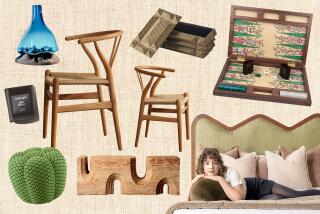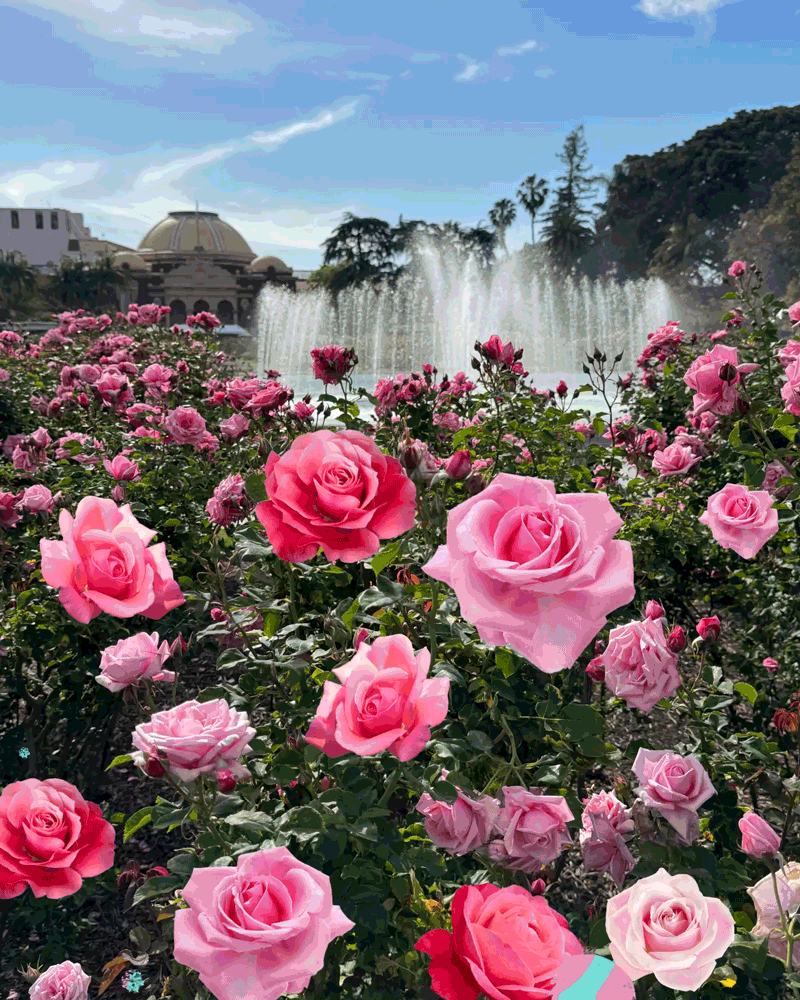Holding Their Own
- Share via
Cast-Iron Garden Jardiniere [Circa 1880] Cast in Louis XV revival style form, this jardiniere features an asymmetrical cartouche and a diaper pattern of small flowers. Popular during France’s belle epoque, this small, sturdy container would have adorned a terrace and been planted with seasonal color, or perhaps filled with maidenhair ferns, which were popular at the time. Cast-iron jardiniere, $495, at Tom Stansbury Antiques, Newport Beach.
*
Italian Grand-Tour Tazza [Early 19th Century] An English aristocrat might have brought this souvenir back from a grand tour, de rigueur for young men whose travels through continental Europe were thought to complete their education. This Brescia marble tazza, or shallow vase with a pedestal, features a scalloped dish with side carvings of Bacchus. In the tradition of European still-life paintings, floral designer Mark Held creates a spray of fresh rosemary and oregano, donkey’s tail, ruby seedless grapes and scented geraniums. Italian tazza, $22,500, at R.M. Barokh Antiques, Los Angeles.
*
Chinese Export Vase Qian Long Period [circa 1750-1760] Crafted in Ching-te-Chen, China, for the European market, this Chinese export porcelain bowl is painted in famille rose enamels and gilt with elaborate scenes of Chinese court life. Bowls such as these were part of most large
export services and were particularly popular for serving up hot wine or rum punches. Enhancing the elaborately painted polychrome is a landscape of amaryllis, dracena, horse tail and mood moss. Chinese export vase, $1,850, Richard Gould Antiques Ltd., Los Angeles.
*
Art Deco Eggshell and Gilt Vase [Circa 1925-30] Made by Boch in Saarland, Germany, this checkered-motif vase in gold leaf and eggshell epitomizes the simplicty and elegance of Art Deco style. Once owned by German professor and architect Herman Billing, the vase was inspired by the work of noted Art Deco designer Jean Dunand, who often used crushed eggshells and lacquer finish on furniture and accessories. Simple white Calla lilies set off the vase and are typical of the period. Art Deco vase, $2,900, at Anne Hauck Art Deco, West Hollywood.
*
French Faience Jardiniere [Circa 1860] This footed faience jardiniere was produced by the Montagnon famly in Nevers, France, and most likely was in the salon of an upper-middle-class home. Mermen handles decorate the highly colored, glazed earthenware, while central cartouches on the bowl’s sides depict scenes of children at play. Fragrant arrangements, such as blue and purple hyacinth and lavender and purple sweet peas, will perfume any room in which the jardiniere is placed. Faience jardiniere, $3,450, at Bruce Graney & Co. Fine Antiques, Pasadena.
*
French Faience Vase [Circa 1890] One of a pair of faience vases produced at the end of the 19th century in the town of Desvres, France, by the
firm Formaintreau-Corquin, this piece displays a “fleur et panier,” a flower-and-basket pattern in typical Rouennaise colors of blue, green, yellow and orange. Deep-yellow Concord and light-peach message roses mixed with green hydrangeas and navel and Valencia oranges complement the arrangement, which echoes the French countryside. Faience vase, $3,675 (for pair), at Bruce Graney & Co. Fine Antiques, Pasadena.
FLORIST MARK HELD’S TIPS:
Personalize an arrangement of store-bought flowers by incorporating something from your own garden--trailing ivy, jasmine, potato vine or citrus on the stem, such as lemons, kumquats, oranges.
*
If an antique container does not hold water, papier-mache or metal liners may be dropped inside the vase.
*
Design an arrangement to be seen from all sides. Otherwise it’s like an unfinished sculpture.
*
Floral arrangements styled by Mark Held and Cynthia Smith of Mark’s Gardens, Sherman Oaks


